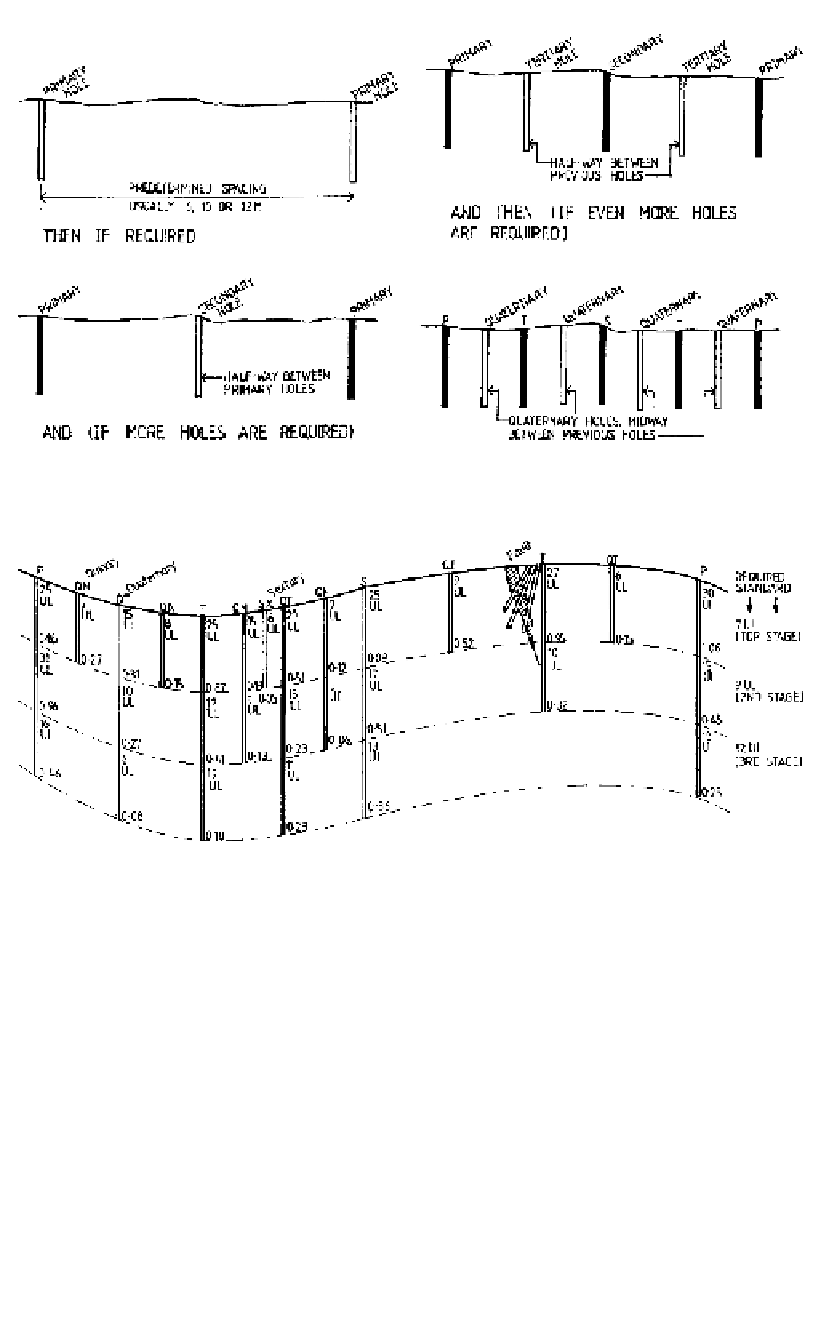Environmental Engineering Reference
In-Depth Information
Figure 18.8.
Basic concept of halving hole spacing to achieve closure.
Figure 18.9.
Examples of grout closure based on Lugeon water pressure test (and grout take as second-
ary information) adapted from Houlsby (1977) and WRC (1981).
Case (b) Primary and secondary grouting has resulted in no significant reduction in
Lugeon value in the tertiary holes prior to grouting them. Houlsby (1977) concludes that
quaternary holes are needed and perhaps quinary later. If holes are already at say 1.5 m
spacing, consideration should also be given to whether grouting with cement is having
any significant effect. If it is concluded that cement grouting is ineffective then grouting
might be discontinued.
Case (c) A closure criterion of 7 uL has been achieved in part, but quaternary holes are
required elsewhere. Since closure is being achieved in part it would seem viable to proceed
to this quaternary stage of grouting where needed.
Case (d) As for Case (a) except that leakage to the surface occurred in grouting the ter-
tiary hole, necessitating further grouting to seal the leak.
Closure requirements may vary with depth and the hole spacing and depth required to
achieve closure may also vary considerably.
Figure 18.10
shows an example taken from
WRC (1981). Note that this is a particularly thorough example of grouting, where if the

